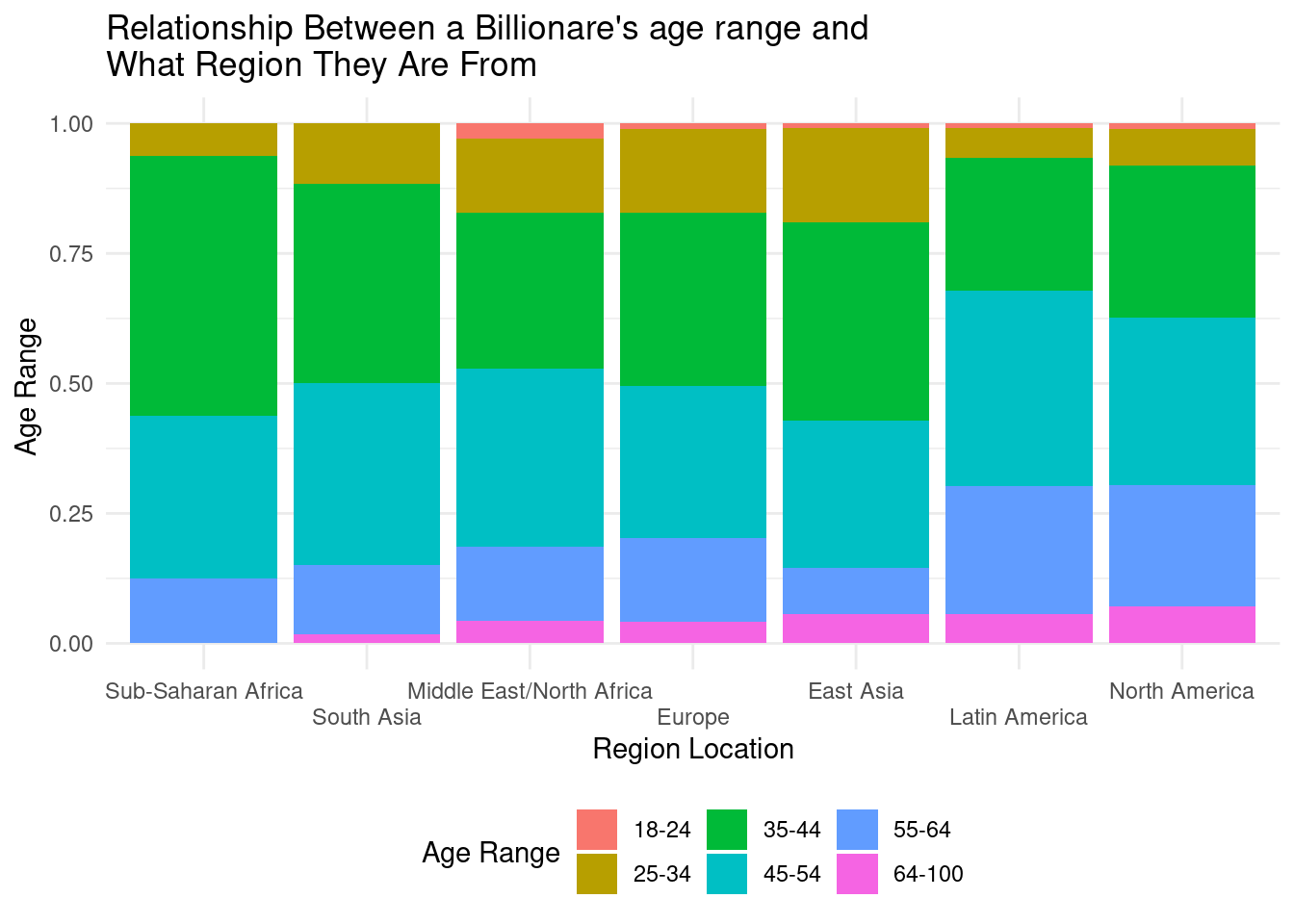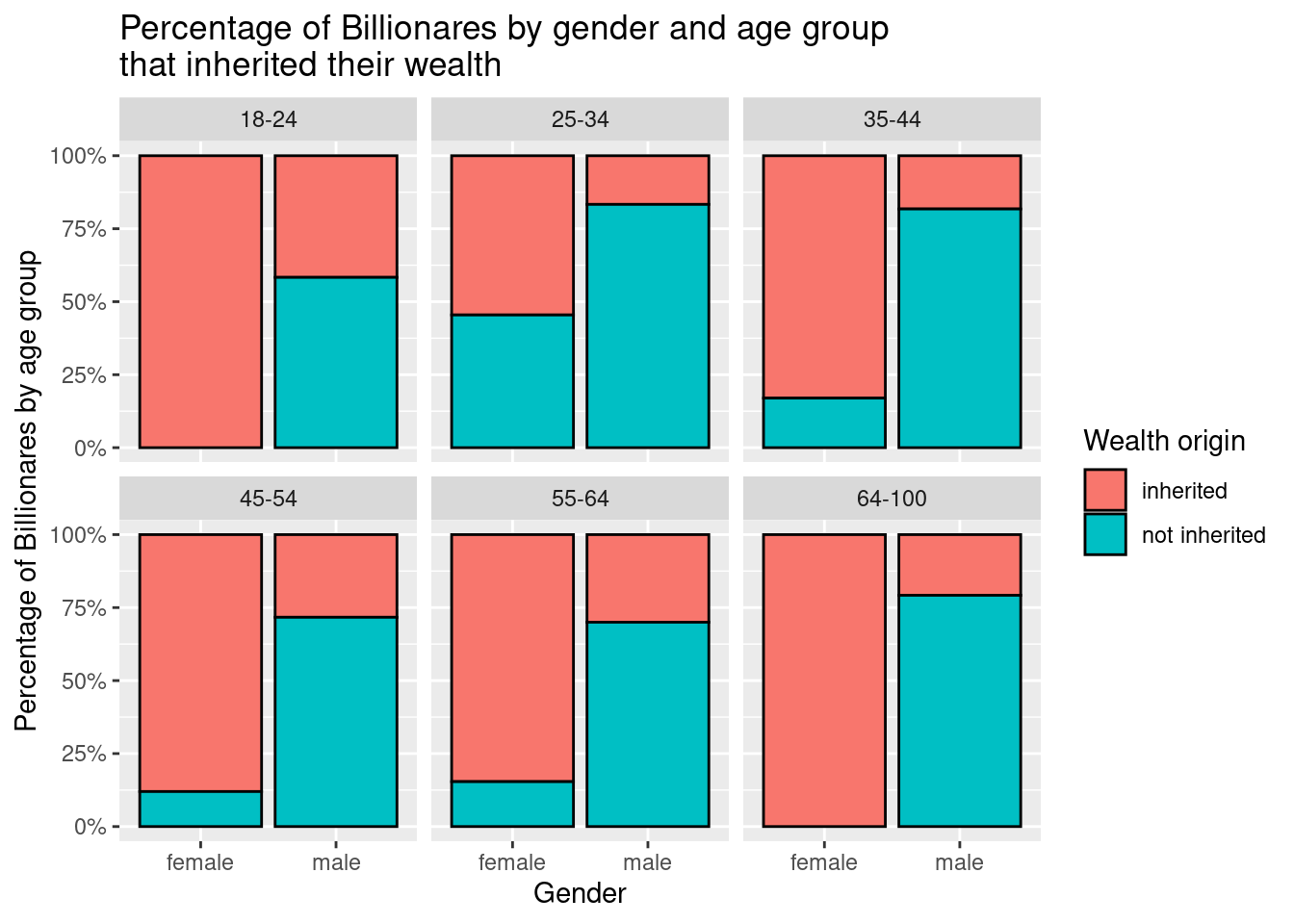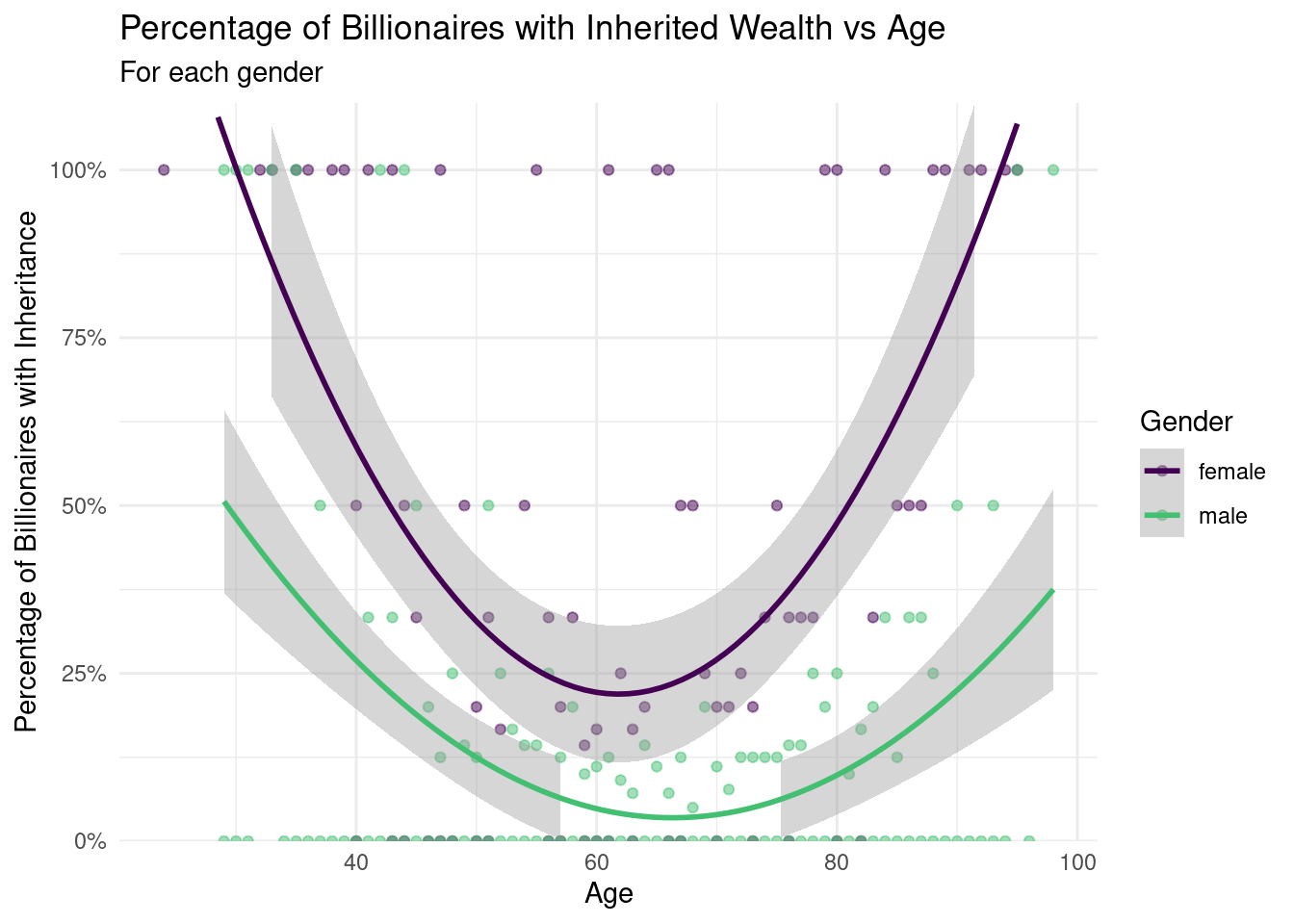Characteristics of Billionaires
Data from the CORGIS Dataset Project
Topic and Motivation
Topic:
- Investigating patterns in the characteristics of the world’s billionaires
Motivation:
- Our motivation behind investigating these patterns was to see if there are any observable inequities between different demographics.
Research Questions:
How do the demographics age and gender play a role in the number of billionaires across the different regions in 2014?
Do age and gender also play a role in the inheritance of wealth among billionaires based on the data from 2014?
Introducing our Data
- Our dataset was created for a working paper in 2016 by Caroline Freund and Sarah Oliver for PIIE and compiled from the Forbes World’s Billionaires lists from 1996-2014.
- It aims to describe the factors related to why or how someone is a billionaire.
- We filtered the data set to only include data from 2014, which is the most recent year included.
- Row: Billionaire
- Column: Attribute
- name
- age
- gender
- region
- age_range
- inheritance
Highlights from EDA
Warning: Using `size` aesthetic for lines was deprecated in ggplot2 3.4.0.
ℹ Please use `linewidth` instead.


Modeling
Warning: Removed 5 rows containing missing values (`geom_smooth()`).
\[ prop~inherited = 2.3 - 0.063 \times age + 0.0004 \times age^2 -0.31 \times male \]
Hypothesis Testing
RQ Part A: How does the demographic age play a role in the inheritance of wealth among billionaires based on the data from 2014?
Null Hypothesis: There is no significant difference between the proportion of inheritors for older billionaires and younger billionaires.
\[ H_0 = p_1 - p_2 = 0 \]
Alternative Hypothesis: There is a significant difference between the proportion of inheritors for older billionaires and younger billionaires.
\[ H_A :p_1 - p_2 \neq 0 \] P-Value = 0.724 is larger than 0.05, we fail to reject the null hypothesis
RQ Part B: How does the demographic gender play a role in the inheritance of wealth among billionaires based on the data from 2014?
Null Hypothesis: There is no significant difference in proportion of inheritors between male and female billionaires. \[ H_0: p_M - p_F = 0 \]
Alternative Hypothesis: There is a significant difference in proportion of inheritors between male and female billionaires.
\[ H_A : p_M - p_F \not= 0 \] P-Value = ~0, is smaller than 0.05, we reject the null hypothesis.
Conclusions + Future Work
Conclusions
- Concluded there is a significant difference in proportion of inheritors between gender, but not age group.
- The results suggest gender-based inequities among the ultra-wealthy worldwide.
- This raises questions about gender inequality in extreme wealth and factors contributing to differences in wealth accumulation between genders.
Future Work
Future research should explore sociological and economic reasons behind gender-based disparities in extreme wealth.
It could also investigate changes in patterns of characteristics of billionaires over time.